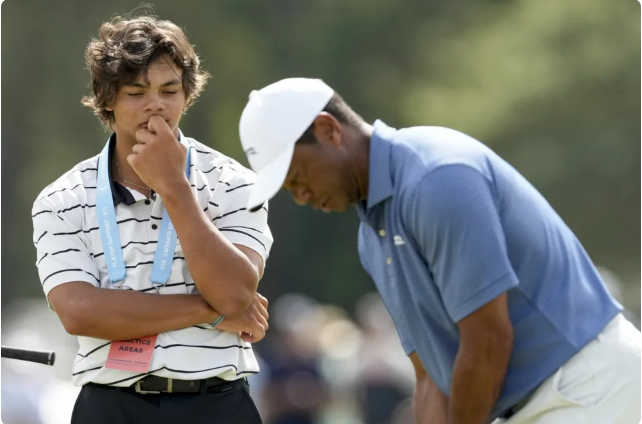Over the past seven months, Charlie Woods, son of Tiger Woods, has faced several setbacks in his golf career.
The 15-year-old’s PGA Tour dreams hit obstacles when he failed to make the cut at his first PGA Tour event, the Cognizant Classic, and missed the cut at the 124th U.S. Open qualifiers.
His struggles continued in junior events. At the Future Masters at Dothan Country Club, Charlie finished T103, carding 73-76 in two rounds.
Despite these challenges, he has one notable achievement this season: qualifying for his first USGA event, the US Junior Amateur, which his father has won three times.
In order to change the direction of his career and finally win a tournament, Charlie Woods will need to learn from his father’s own battles as a young golfer.
How did Tiger Woods overcome his fear of competition?
In a rare ESPN interview, Tiger Woods recounted feeling intimidated by an older player at the Junior Worlds at age 11.
“It intimidated the hell out of me,” Woods told ESPN.
This experience taught him to focus on small victories to gain momentum in golf, setting little goals like making the fairway or draining a putt. This mindset helped him become the fearless golfer he is known to be.
To succeed, Charlie might need to adopt his father’s approach to overcoming fears and distractions. Tiger’s stringent routine, developed with the help of his father Earl Woods, included running 4 miles in the morning, gym sessions, practicing golf for 2 to 3 hours, playing basketball or tennis, and running another 4 miles to end the day. Such a routine could help Charlie improve his game.
Earl Woods’s rigorous mental training methods significantly shaped Tiger’s legendary career. Tiger continues this tradition with Charlie, ensuring his son can withstand mental distractions. In a 2022 interview with Paul Azinger and Dan Hicks, Tiger confirmed he challenges Charlie’s mental stamina, using tactics to distract him during practice.
“If I can get into his head, that means someone else can get in his head. It’s getting to a point where I can’t get in his head, and then no one else can get in there, either,” Tiger detailed.
